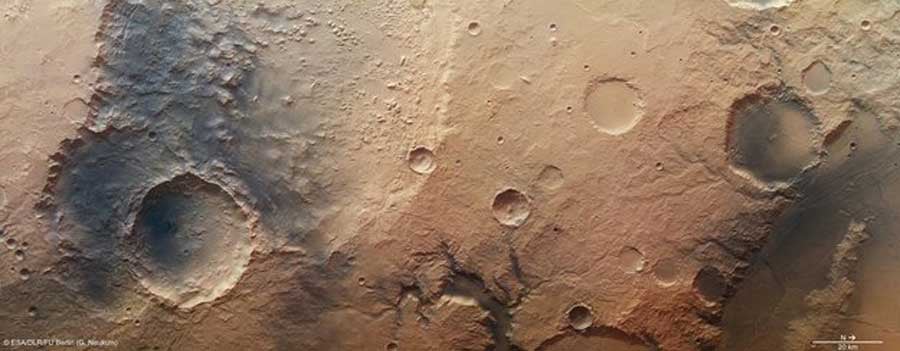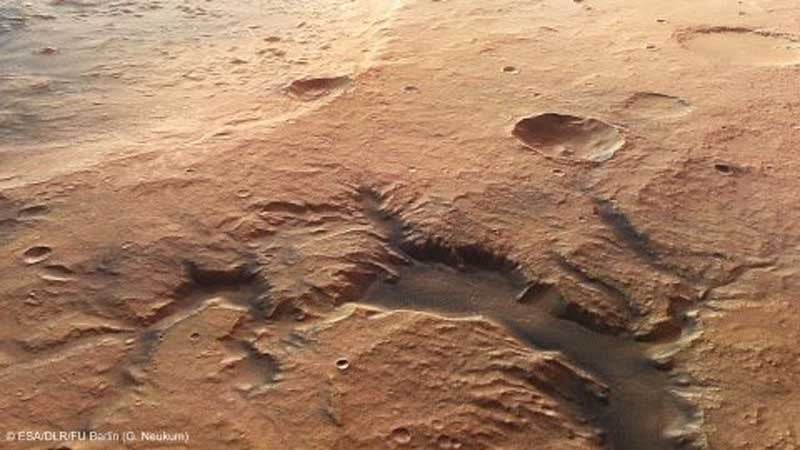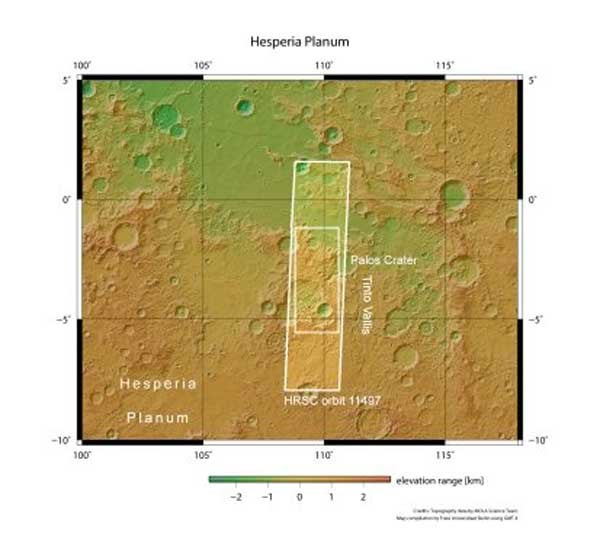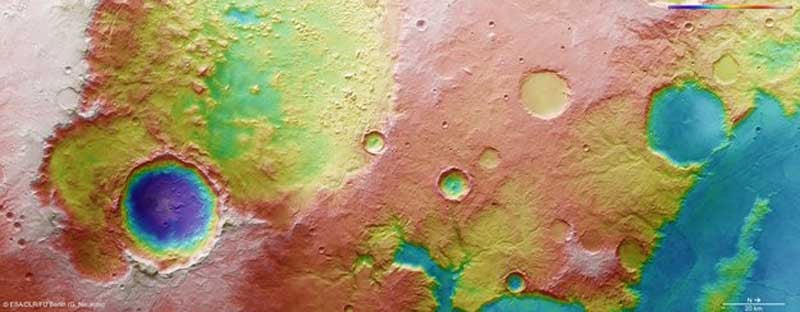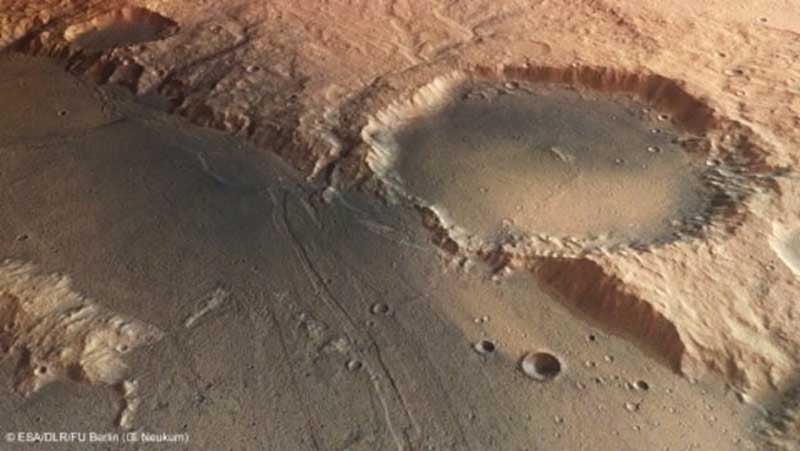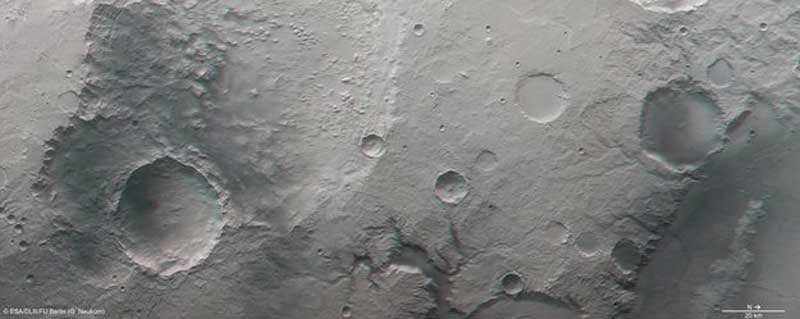At the bottom-center of the full-color image, and up close in the first perspective image, is a nearby shorter and wider valley that is fed by a number of tributaries before it joins the mouth of Tinto Vallis, as both empty into Palos Crater just off the bottom of the image.
The network of shorter valleys shown in the first perspective image is thought to have formed through volcanic activity melting subsurface ice and liberating water to the martian surface via seeps and springs.
Another eye-catching feature is the relatively deep 20-mile-wide (35km) crater seen in the left-hand portion of the color, topographic, and 3-D images. Spectacular landslides along the crater’s walls can be seen and are particularly evident along the broken southern (left) rim.
The floor of this 60-mile-wide (100km) crater is chaotic, with flat-topped geological features called mesas and their smaller siblings, buttes, littering the floor. These are probably the result of the removal of subsurface water ice leading to the collapse of weaker material around them, leaving these more-resistant, high-sided features behind. On Earth, the desert regions in Utah are home to many examples of these types of formation.
The darker regions to the far north and south, shown most clearly in the first color image, are covered in wind-transported basaltic sands.
The smooth low-lying region to the far right and shown in the second perspective image is a small trough that feeds into the broader lava field of Amenthes Planum. The trough has likely been modified by the outflow of material from the ancient lake that may have once existed in Palos Crater, the rim of which can only just be seen at the bottom of the color, topographic, and 3-D images. This smooth, channel-like feature brushes against the rim of a 20-mile-wide (30km) crater, and both have been covered with dark wind-blown materials.

